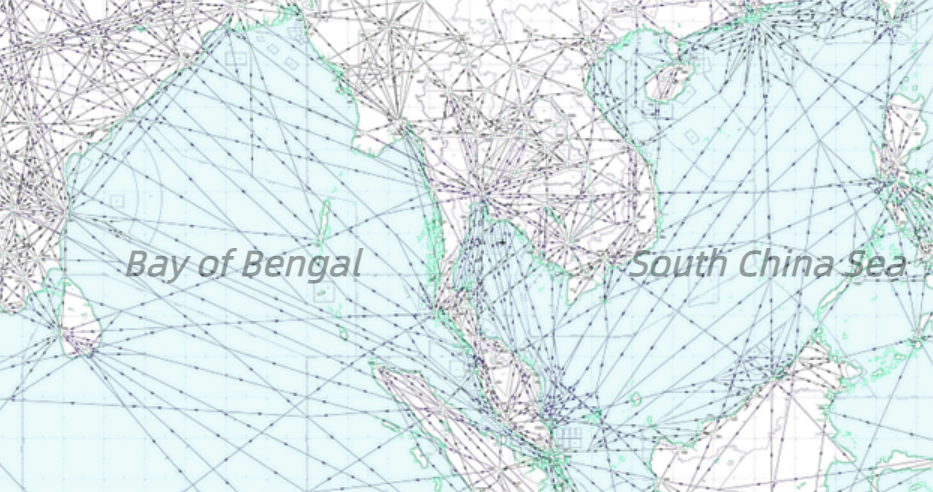What
is AOM/ASM?
· Airspace Organization
Management (AOM) AOM focuses on designing a well-organized
airspace structure that supports various types of air activities, different
traffic volumes, and varying service levels and regulations, all aimed at
improving the efficiency and safety of air travel. It is a vital part of Air
Traffic Management (ATM) that involves the dynamic and integrated management of
both air traffic and airspace. AOM ensures the safe, economical, and efficient
flow of air traffic by providing necessary facilities and seamless services in
coordination with all involved parties, including both airborne and
ground-based operations.
The main objective of AOM is to optimize the
use of available airspace by dynamically sharing time and, when needed,
separating airspace among different categories of users based on short-term
needs. This process, known as Airspace Management (ASM), involves selecting and
implementing airspace options to meet the needs of airspace users. The ultimate
goal is to make the most efficient use of airspace based on actual needs and to
avoid permanent airspace segregation whenever possible.
· Main principles of ASM
include:
▶ Flexible Use of Airspace (FUA): This concept allows airspace to be managed dynamically and temporarily segregated as needed, rather than being exclusively controlled by either civil or military entities.
▶ Communication, Cooperation, and
Coordination: These are critical elements for implementing FUA, ensuring that
all parties collaborate effectively to manage airspace.
▶ National, High-Level
Civil/Military Coordination: This is essential for a consistent and
collaborative national airspace planning process.
· Airspace Management (ASM)
ASM is a method
used to choose and implement airspace options to satisfy the needs of the Air
Traffic Management (ATM) community. It is a planning activity aimed at
maximizing the use of available airspace through dynamic time-sharing and
sometimes segregating airspace among different categories of users based on
short-term requirements.
The main goal of
ASM is to ensure the most efficient use of the airspace according to actual
needs and, if possible, to avoid permanent airspace segregation. When it becomes
necessary to separate different types of traffic by organizing the airspace
(for instance, aircraft conducting military exercises), the size, shape, and
time regulations of these areas are designed to minimize the impact on overall
operations.
The Regional Sub-Office AOM/ASM team collaborates closely with ICAO APAC Regional Office, and,where necessary, supports Headquarters' staff for all air navigation matters, and particularly withrespect to the implementation of Airspace Management in accordance with the Global Air NavigationPlan, the Asia/Pacific Seamless ANS Plan, the Aviation System Block Upgrades (ASBUs) framework andother related plans and policies, achieving results such as:
- Participate in the definition of the Regional Sub-Office work programme
in the fields of Airspace Management.
- Identify challenges faced by States and propose action list to support
the States.
- Planning, organizing and managing assigned resources to ensure that they
are being used efficiently to meet ICAO Strategic Objectives in a timely and
efficient manner in accordance with agreed performance objectives.
- Contribute to the APAC Regional Office’s policy development related to
Airspace Management, by coordination with the ATM Section of the Regional
Office.
- Assess the implementation status of airspace management in APAC States.
- Support States in the development and implementation of airspace
management.
- Organize seminars/workshops to promote international practices on
airspace management implementation and airspace simulation.
- Organize other activities aimed at achieving the most efficient use of
airspace, or addressing specific implementation challenges.

· SAIOSEACG:
South Asia, Indian Ocean and Southeast
Asia ATM Coordination Group
https://www.icao.int/APAC/Meetings/Pages/2022-SAIOSEACG-1.aspx
https://www.icao.int/APAC/Meetings/Pages/2023-SAIOSEACG-2.aspx
https://www.icao.int/APAC/Meetings/pages/2024-SAIOSEACG-3.aspx
· SCSTFRG: South
China Sea Traffic Flow Review Group
https://www.icao.int/APAC/Meetings/Pages/2015-SCS-MTFRG1.aspx
https://www.icao.int/APAC/Meetings/Pages/2015-SCSMTFRG2.aspx
https://www.icao.int/APAC/Meetings/Pages/2016-SCS-MTFRG3.aspx
https://www.icao.int/APAC/Meetings/Pages/2016-SCSTFRG4-.aspx
https://www.icao.int/APAC/Meetings/Pages/2017-SCSTFRG5.aspx
https://www.icao.int/APAC/Meetings/Pages/2018-SCSTFRM6.aspx
https://www.icao.int/APAC/Meetings/Pages/2018-SCSTFRG7.aspx
https://www.icao.int/APAC/Meetings/Pages/2019-SCSTFRG8.aspx
https://www.icao.int/APAC/Meetings/Pages/2021-SCSTFRG9.aspx
https://www.icao.int/APAC/Meetings/Pages/2022-SCSTFRG-10.aspx
https://www.icao.int/APAC/Meetings/Pages/2023-SCSTFRG11.aspx(
· BOBTFRG:
Bay of Bengal Traffic Flow Review
Group
https://www.icao.int/APAC/Meetings/Pages/2018-BOBTFRG1.aspx
https://www.icao.int/APAC/Meetings/Pages/2019-BOBTFRG2.aspx
https://www.icao.int/APAC/Meetings/Pages/2021-BOBTFRG-3.aspx
https://www.icao.int/APAC/Meetings/Pages/2022-BOBTFRG4.aspx
https://www.icao.int/APAC/Meetings/Pages/2023-BOBTFRG-5.aspx
· Route development/Route
Catalogue
The Fourteenth Meeting of the Asia/Pacific
Air Navigation Planning and Implementation Regional Group (APANPIRG/14, August
2004) under Conclusion 14/5 established the ATS Route Network Review Task Force
(ARNR/TF) to review the Asia and Pacific ATS route network to determine present
and future route requirements. It’s been an ongoing project ever since.
To facilitate the amendment process and keep
track of route implementation and future requirements, and with the objective
of providing more up to date information on route developments, the ICAO Asia
and Pacific (APAC) Regional Sub-Office has updated the Asia/Pacific Region ATS
Route Catalogue based on the information provided by States/Administrations and
airspace users through email correspondences and meetings.
The Asia/Pacific Region ATS Route Catalogue
records the current status of route proposals, which may not have reached the
stage of the formal proposal through the Regional Air Navigation Plan Proposal
for Amendment (PfA) process.
The most recent Version
23.2 of the Catalogue is available at the ICAO Asia/Pacific website
https://www.icao.int/APAC/Pages/eDocs.aspx#tabs-3 under the ‘ATM’ category.
